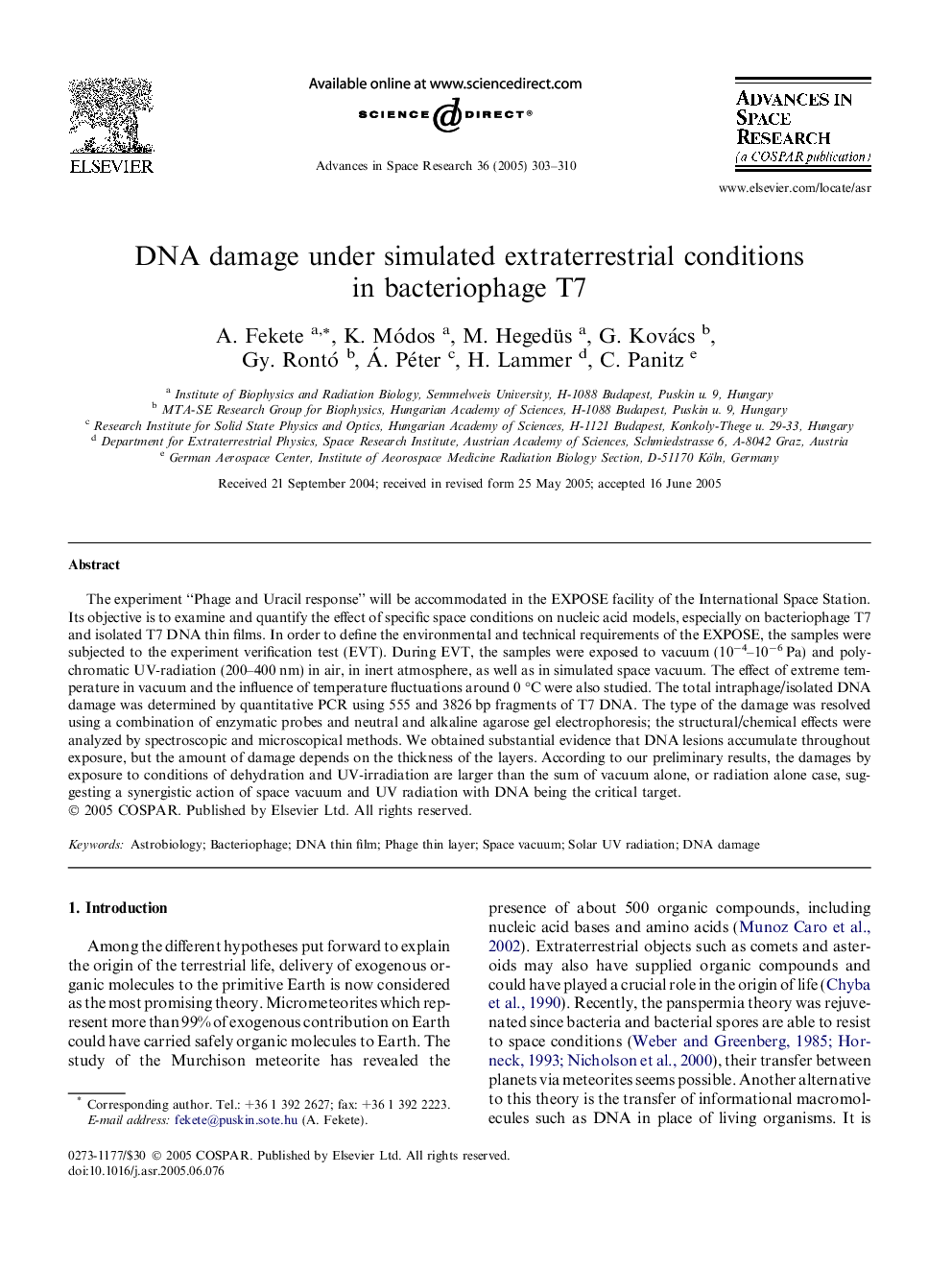| Article ID | Journal | Published Year | Pages | File Type |
|---|---|---|---|---|
| 10696920 | Advances in Space Research | 2005 | 8 Pages |
Abstract
The experiment “Phage and Uracil response” will be accommodated in the EXPOSE facility of the International Space Station. Its objective is to examine and quantify the effect of specific space conditions on nucleic acid models, especially on bacteriophage T7 and isolated T7 DNA thin films. In order to define the environmental and technical requirements of the EXPOSE, the samples were subjected to the experiment verification test (EVT). During EVT, the samples were exposed to vacuum (10â4-10â6 Pa) and polychromatic UV-radiation (200-400 nm) in air, in inert atmosphere, as well as in simulated space vacuum. The effect of extreme temperature in vacuum and the influence of temperature fluctuations around 0 °C were also studied. The total intraphage/isolated DNA damage was determined by quantitative PCR using 555 and 3826 bp fragments of T7 DNA. The type of the damage was resolved using a combination of enzymatic probes and neutral and alkaline agarose gel electrophoresis; the structural/chemical effects were analyzed by spectroscopic and microscopical methods. We obtained substantial evidence that DNA lesions accumulate throughout exposure, but the amount of damage depends on the thickness of the layers. According to our preliminary results, the damages by exposure to conditions of dehydration and UV-irradiation are larger than the sum of vacuum alone, or radiation alone case, suggesting a synergistic action of space vacuum and UV radiation with DNA being the critical target.
Related Topics
Physical Sciences and Engineering
Earth and Planetary Sciences
Space and Planetary Science
Authors
A. Fekete, K. Módos, M. Hegedüs, G. Kovács, Gy. Rontó, Á. Péter, H. Lammer, C. Panitz,
